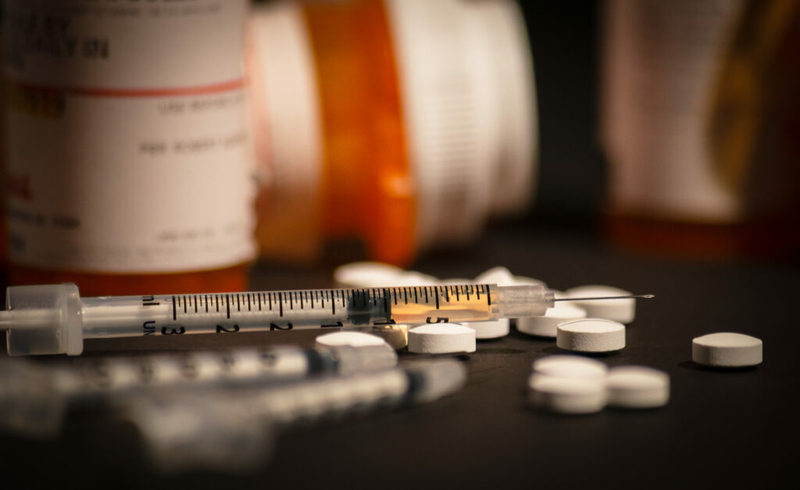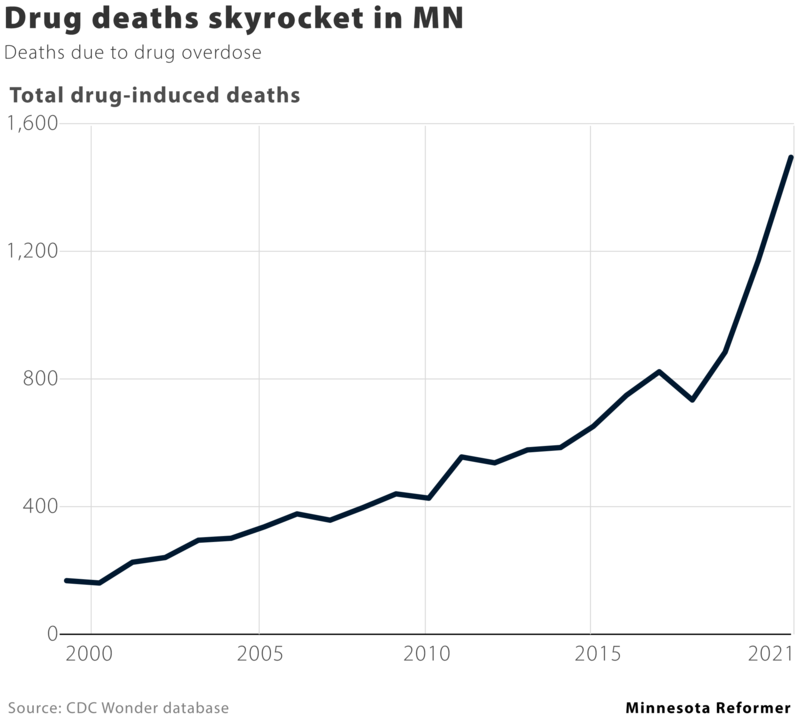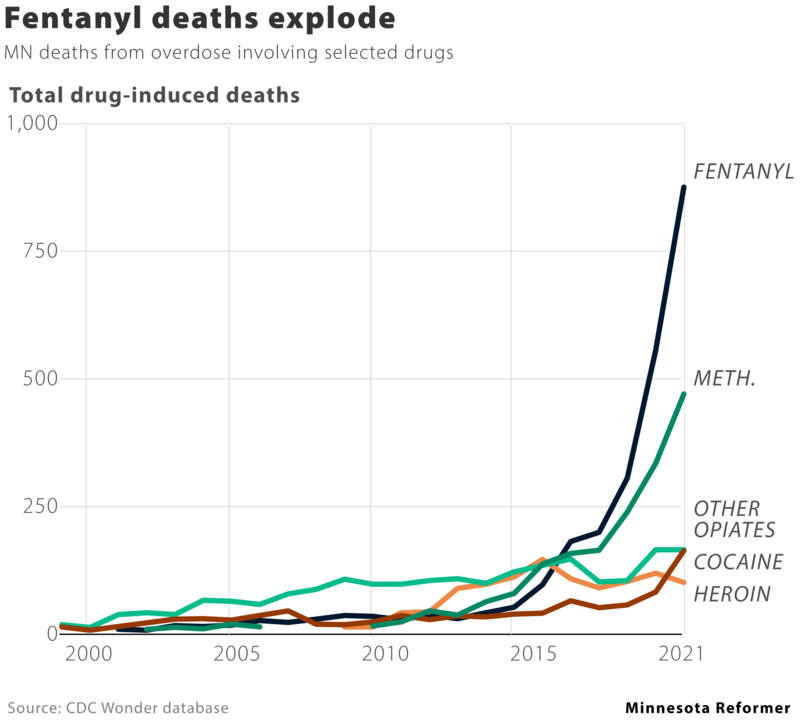Minnesota overdose deaths up sharply last year, driven by fentanyl


Minnesota drug overdose deaths hit a record high in 2021, according to provisional data from the federal Centers for Disease Control and Prevention. The sharp uptick in fatal overdoses mirrors a pandemic-era trend also seen in other so-called deaths of despair, like suicide and alcoholism.
Nearly 1,500 Minnesotans lost their lives to drugs last year, a number that’s more than doubled since 2018. Fentanyl, a synthetic opioid much more potent than other narcotics, was involved in nearly 60% of those overdoses. The 881 fentanyl deaths represent more than a fourfold increase since 2018.
As it happens, that’s the year the Legislature passed and Gov. Mark Dayton signed a significant bill aimed at curbing the opioid problem.
Methamphetamines were the second-most common type of drug to be involved in lethal Minnesota overdoses, at 474 cases. That figure’s up threefold since 2018. Non-fentanyl opiates were involved in about 170 cases, as was cocaine. Heroin accounted for about 100 overdoses. Note that these individual drug categories are not mutually exclusive: In many cases, multiple drugs were involved in a fatal overdose.

Minnesota is not unique in experiencing a rapid increase in overdose mortality: Nationwide, the number of annual drug deaths increased from about 70,000 in 2018 to nearly 110,000 last year. As in Minnesota, fentanyl is driving much of the nationwide surge, rising from less than half of overdose deaths in 2018 to roughly two-thirds last year.
The overdose rate has increased more rapidly in the Twin Cities than in greater Minnesota. Both regions had an overdose rate of about 11 deaths per 100,000 residents in 2014. By last year, the death rate in the seven-county metro area stood at 30, while greater Minnesota’s rate was 23 per 100,000.
Mortality rates of nearly all major drug categories are higher in the Twin Cities than in greater Minnesota. The sole exception is methamphetamine, which is killing people at nearly identical rates both within the metro area and outside it.
Authorities often craft public health messaging around the threats lethal drugs pose to children (see, for instance, the latest DEA push about the supposed dangers of “rainbow fentanyl” meant to entice kids). The reality, in Minnesota and elsewhere, is that adults — especially those in their prime working years — make up the lion’s share of overdose deaths.
Since 2018, for instance, roughly 97% of Minnesota overdose deaths have occurred among people aged 20 and older. The highest death rates are seen among people in their 30s and 40s.
There are vast racial disparities in Minnesota overdose deaths, as well. Indigenous Minnesotans experienced 192 overdose deaths per 100,000 population in 2021, more than nine times the rate (21 per 100,000) among white residents. The rate among Black residents stood at 66 per 100,000, while Minnesotans of Asian descent had the lowest rate, at around seven per 100,000.
Illicit drugmakers often mix fentanyl with other substances as a cheap way to increase potency. As a result, many people who overdose on the powerful opioid do so unwittingly. This month, for instance, a Hopkins man was sentenced to life in prison for distributing fentanyl that was mislabeled as a chemical akin to Adderall. That mix-up led to 11 deaths.
Authorities in Minnesota have taken steps to combat the rise in fentanyl deaths. They’ve broadened access to the drug Naloxone, which can reverse overdoses if administered in time. Last year they also made it legal to carry and use test strips, which can detect the presence of fentanyl in a substance.
There are some signs that overdoses in Minnesota may be plateauing. Early provisional data from the CDC shows drug deaths declining slightly through April, the most recent month with available data. It’s too early to tell, however, whether this is just a short-term fluctuation or a sustainable downward trend.








